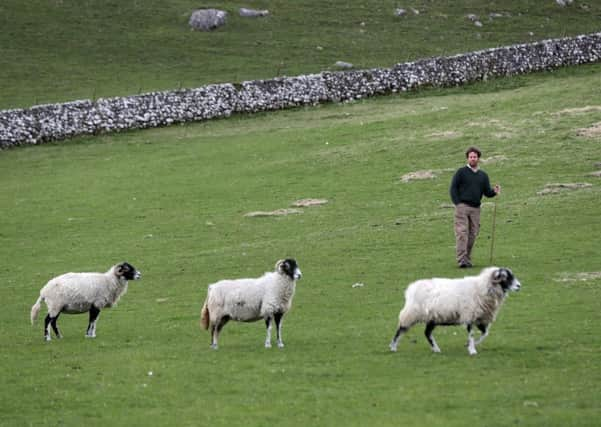'˜Fewer livestock could boost farm resilience in the uplands'


Uplands futures can be bright as farm payments are restructured, he suggested, having seen his own farm’s reliance on public money fall by reducing stock levels and his animal’s environmental impact.
At the Northern Farming Conference, Mr Heseltine of Hill Top Farm told of how he introduced 19 Belted Galloway heifers and a bull to the farm for a conservation grazing scheme in 2003. The beef-producing herd stays outside year-round, is not fed on concentrates and does not need routine medical treatments.
Advertisement
Hide AdAdvertisement
Hide AdBy 2012, he was also breeding North of England mule lambs from 400 Swaledale ewes, finding the process “absolutely full on”.
With this taking a toll, and the low input nature of his cattle reaping greater wildlife and plant diversity on the farm - such as the presence of breeding curlew - he re-evaluated his sheep enterprise and found it had made just a £478 profit in a year.
Having grown concerned too about the environmental impact of his sheep, he sought to replicate the cattle model by halving sheep numbers and lambing later in the year when grass growth would cut reliance on concentrates for feed. By 2016, his sheep income had halved but production costs had fallen significantly, giving him a return.
Sharing what he had learnt, Mr Heseltine said: “It’s become apparent that maximising production and maximising income is not necessarily the key driver to profitability. It’s more about margin than it is about income.”
Advertisement
Hide AdAdvertisement
Hide AdHis profit over the last three years were 60 per cent higher than the previous three years and his profitability’s reliance on subsidies had fallen from 70 per cent to 40 per cent. “We feel we have a much more balanced, and therefore a more robust business which is more able to withstand the vagaries and challenges of farming life,” he said.
Mr Heseltine said the changes had also improved his family’s quality of life and made their presence in the area more tenable in the long-term.
On the value of rationalising stock numbers, Mr Heseltine concluded: “With a greater emphasis on the natural environment, with improved resilience in order to retain farming families and therefore the continuation of farming communities, it could just be that less is more.”
VALUE OF SOCIAL MEDIA
Mr Heseltine told of the growing importance of social media to his business, which includes a holiday accommodation run by his partner Leigh.
Advertisement
Hide AdAdvertisement
Hide AdAcross Twitter and Instagram, as @hilltopfarmgirl, they have 32,000 social media followers, with whom they share pictures of their farm.
“It has given us a direct link to our customers and it makes a direct link between the way we farm and the way we produce.
“It’s become a really powerful marketing tool for both the accommodation and the produce from the farm, and It’s something we intend to increase as we go forward.”
